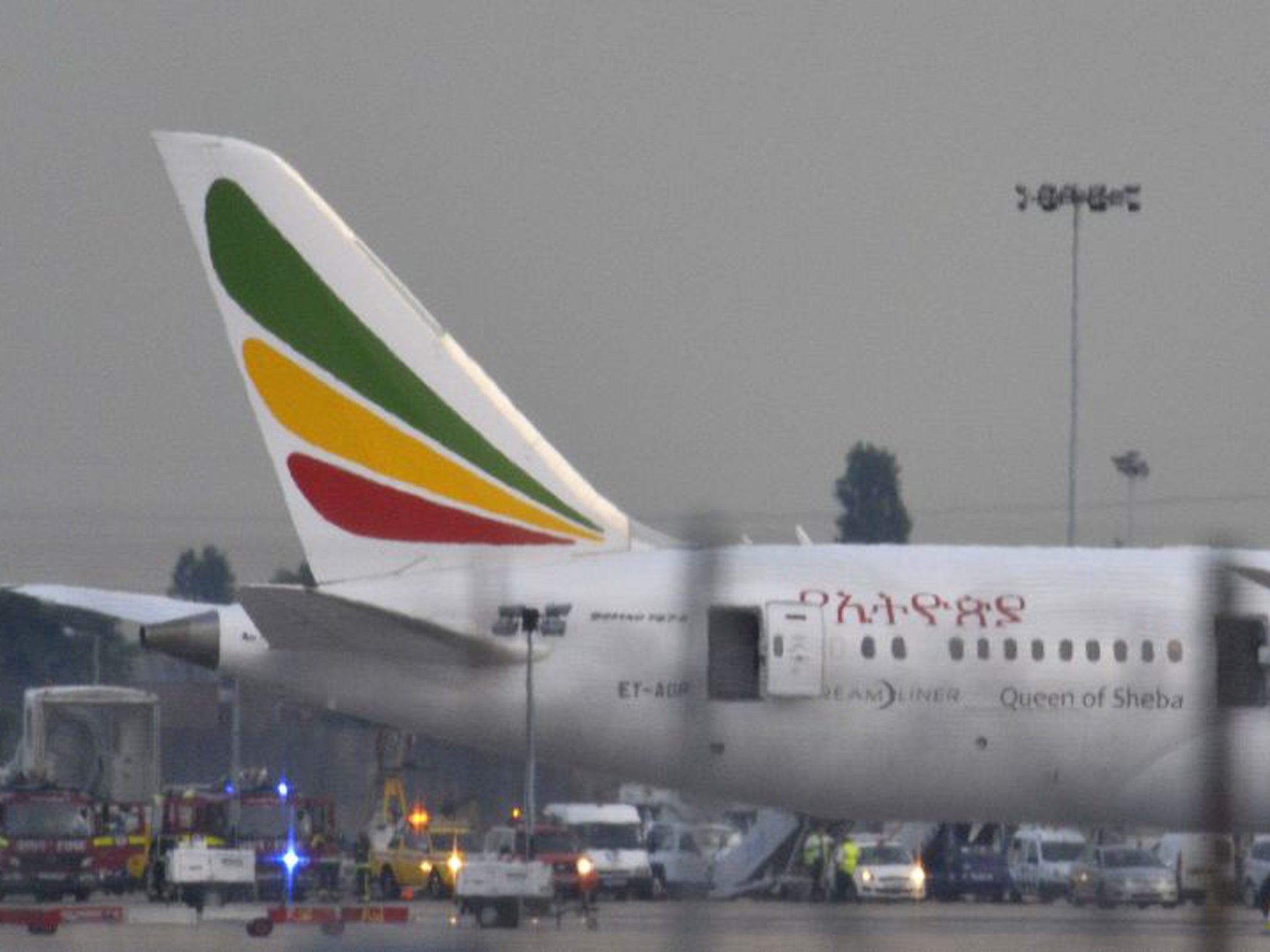'Thermal event' in lithium battery behind Dreamliner fire at Heathrow
Investigators urge US operators to remove device powered by battery until safety fix can be found

Your support helps us to tell the story
From reproductive rights to climate change to Big Tech, The Independent is on the ground when the story is developing. Whether it's investigating the financials of Elon Musk's pro-Trump PAC or producing our latest documentary, 'The A Word', which shines a light on the American women fighting for reproductive rights, we know how important it is to parse out the facts from the messaging.
At such a critical moment in US history, we need reporters on the ground. Your donation allows us to keep sending journalists to speak to both sides of the story.
The Independent is trusted by Americans across the entire political spectrum. And unlike many other quality news outlets, we choose not to lock Americans out of our reporting and analysis with paywalls. We believe quality journalism should be available to everyone, paid for by those who can afford it.
Your support makes all the difference.The short, troubled life of Boeing’s 787 Dreamliner has taken another twist – with British investigators blaming last week’s fire at Heathrow on a “thermal event” involving a lithium battery. It was the power source for the Emergency Locator Transmitter (ELT), a piece of safety equipment that sends out a radio distress signal should the aircraft ditch in water or crash-land in an unpopulated area.
The Air Accidents Investigation Branch (AAIB) report reveals the problems the airport fire-fighters had in tackling the blaze. They encountered “thick smoke” and were unable to put out the fire with a portable Halon extinguisher. Next, says the report: “They forcibly removed a ceiling panel and tackled the fire with water from hoses”.
The AAIB said: “Had this event occurred in flight it could pose a significant safety concern and raise challenges for the cabin crew in tackling the resultant fire”.
The investigators have urged the US aviation authorities to tell airlines to disable the beacon on other 787s until a safety fix can be found, and to investigate lithium-powered ELTs on other aircraft in case they pose a similar hazard.
Boeing said that it supported the recommendations, which it described as “reasonable precautionary measures”. The plane maker said: “We are confident the 787 is safe and we stand behind its overall integrity”.
The beacon is made by Honeywell. Around 6,000 similar devices have been fitted to aircraft, but last week’s blaze was “the only significant thermal event”.
The power source is lithium-manganese dioxide, and is different device to the lithium-ion batteries that caused the plane to be grounded for three months at the start of the year.
The only UK operator of the Dreamliner is Thomson Airways, which flies from Gatwick, East Midlands, Manchester and Glasgow to Mexico and Florida. British Airways has just taken delivery of its first 787s, and aims to begin long-haul scheduled services on 1 September.
The fire at Heathrow last Friday caused both runways to be closed for over an hour, and led to dozens of flight cancellations. Disruption continued over the weekend, with BA cancelling a further 60 departures.
Join our commenting forum
Join thought-provoking conversations, follow other Independent readers and see their replies
Comments